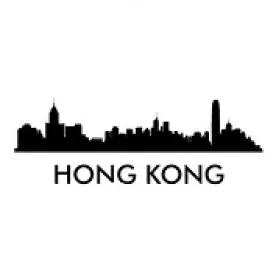The Trump administration has recently taken a new approach by levying legal and administrative action against Hong Kong as part of its strategy to lessen U.S. reliance on foreign trade, particularly China. As background, on May 27, 2020, the secretary of state certified to Congress under the Hong Kong Policy Act (HKPA) – which historically established that the U.S. maintain relations with Hong Kong separately from mainland China – that Hong Kong no longer maintains a high degree of autonomy from China. This certification came in parallel with the adoption of the Hong Kong Autonomy Act (HKAA), the latest in a series of human rights-focused sanctions aimed at China for interfering in Hong Kong’s autonomy. On July 14, 2020, the president issued an Executive Order (EO) on Hong Kong Normalization, which gives the president authority under the HKPA to declare Hong Kong as no longer sufficiently autonomous to justify differential treatment with respect to a number of statutes, regulations and treaties relating to export controls, travel and immigration, law enforcement, and scientific and educational cooperation.
These developments have raised questions for U.S. companies that have turned to Hong Kong imports as an alternative to Chinese imports, particularly in light of the Section 301 tariff actions.
New Hong Kong Marking Requirements
U.S. Customs and Border Protection (CBP) has provided a 90-day transition period beginning August 11, 2020, through November 9, 2020, for importers to comply with new marking regulations for Hong Kong-origin goods. Specifically, goods that are produced in Hong Kong that are entered or withdrawn from warehouses for consumption into the United States must be marked in a conspicuous place on the items to indicate that their origin is “China.”
Section 301 Tariff Actions
The EO on Hong Kong Normalization provides that Hong Kong is no longer sufficiently autonomous to justify differential treatment in relation to mainland China “under the particular United States laws and provisions thereof set out in this order.” The EO does not reference Section 301 of the Trade Act of 1974; therefore, on its face, the EO should only apply to the statutes specifically enumerated therein. Further, from a Section 301 perspective, the current tariffs are based on an investigation into China when Hong Kong was not considered part of mainland China under U.S. law.
CBP has clarified via its website that the new marking requirements do not affect country-of-origin determinations for purposes of assessing duties under Chapters 1-97 of the Harmonized Tariff Schedule of the United States (HTSUS) or temporary or additional duties under Chapter 99 of the HTSUS. Thus, Hong Kong imports are not subject to Section 301 duties, and importers should continue to report Hong Kong as the country of origin when required.
Antidumping and Countervailing Duties
Similarly, the EO on Hong Kong Normalization does not reference the Tariff Act of 1930, the governing law for antidumping duties (AD) and countervailing duties (CVD). Further, existing AD and CVD orders on Chinese goods are based on investigations where Hong Kong was not considered to be part of mainland China under U.S. law. In particular, for an AD or CVD order to be established and duties to be implemented, the U.S. International Trade Commission must determine that the domestic industry has been injured by means of the dumped or subsidized goods. Critical to this determination is the level of imports from a particular country. Thus, the applicability of a past order to now include Hong Kong is legally dubious. Additionally, Hong Kong companies would not have been afforded the opportunity to participate in the investigation before the U.S. Department of Commerce in determining whether dumping or subsidization has occurred, raising concerns on due process and the Administrative Procedures Act. Finally, as the CBP marking requirements do not affect country of origin and AD and CVD orders are based on country of origin, the EO on Hong Kong Normalization has not had any immediate effect on existing AD and CVD duties in place against Hong Kong or China.
However, new developments in the treatment of Hong Kong for future AD investigations could still arise. China has historically been treated as a non-market economy (NME) country by the U.S. Department of Commerce as it does not operate on market principles of cost or pricing structures, so that sales of merchandise from China do not reflect fair values. However, Hong Kong has traditionally been recognized as distinct from China, and thus not subject to the same NME designation. The NME designation is one made by the Department of Commerce; thus, the EO on Hong Kong Normalization does open the door for the department to change its future treatment of Hong Kong, though no such decisions have been made yet.
Conclusion
While future developments may still unfold between the U.S. and Hong Kong’s trade relationship, U.S. importers have been largely spared from more drastic impacts in the form of increased tariff obligations. Nonetheless, as U.S. importers evaluate their supply chain to ensure they meet CBP’s marking requirements by November 9, 2020, it may be a good time to evaluate whether continued or future business dealings in Hong Kong are worth potential future uncertainty.





 />i
/>i

